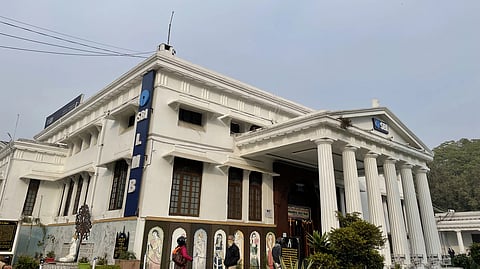From a royal observatory to SBI branch: Know all about the 190-yr-old Tare Wali Kothi in Lucknow
Did you know about the Tare Wali Kothi or Mansion of Stars, standing tall in the city of Nawabs for 190 years now? Engendering from his fondness of the stars and astronomy, the then King of Oudh Nasir-ud-Din Haidar Shah had built this lesser-known marvel as a royal observatory. As the name suggests, here, you could observe stars in the sky here through a beautiful dome. However, with time, the place saw numerous changes as Awadh evolved in front of it.
Would you like to hop on this time machine as we travel back to 1832 and the centuries that followed watching the Tare Wale Kothi in Lucknow emerging victorious in all the tests of nature? Make your 'yes' as loud as the kilkaari that echoed here during the Sepoy Mutiny.
An astronomical marvel
The grandson of Nawab Saadat Ali Khan II, Nasir-ud-Din Haidar Shah, had accepted Hakim Mehdi Ali Khan's proposal of the royal observatory in 1831. The heritage site that you see today was created by the efforts of hundreds of artisans and labourers and legend has it that it encompassed some exemplary instruments like telescopes, barometers, magnetometers, thermometers, lodestones, and so on, with a huge brass pillar also erect in the centre.
This two-storeyed building, with two halls and basements, consisted of a circular room on the top showcasing a metallic hemispherical dome (used for observation of stars). An ahead-of-its-time innovation, the dome, that had a wheel and pulley system attached to it, could be rotated and adjusted as desired. Shutters of the dome could also be opened or closed as required.
The observatory would serve "not only as a means of establishing a series of observations of heavenly bodies, but more particularly as a school for young courtiers in which some knowledge of astronomy and general physics might be taught," an account read on the avant-garde structure.
Tare Wali Kothi's journey
As the years passed, the kothi not only became a symbolic beauty embellishing Shaam-e-Awadh, but also a pre-historic site that witnessed the war cry of Indian freedom fighters during the Rebellion of 1857 against the British. It was said to be the headquarters of Maulvi Ahmadullah Shah of Faizabad, a leader in the war. It was at this time that Insurgent council meetings were also frequently organised in its lap.
The Tare Wali Kothi has seen tremendous changes and today has taken the shape of the SBI branch head office in Lucknow. Initially occupied by the Imperial Bank of India (today, the State Bank of India), it was taken over in 1923 as the bank's headquarters.
Emblem of Lucknow's history
The Tare Wale Kothi is a prevailing testimony to Lucknow's rich history, culture, traditions, art, and architecture. And numerous efforts have been made to conserve the structure and constant developments ensure that its history is well noted, with all the significant people associated with the former observatory going down in the hall of fame here.
You can know all about Lucknow's contribution in the historical events that this building has witnessed through the ages by visiting the historic place.
Location: Hazratganj, Lucknow
To get all the latest content, download our mobile application. Available for both iOS & Android devices.

